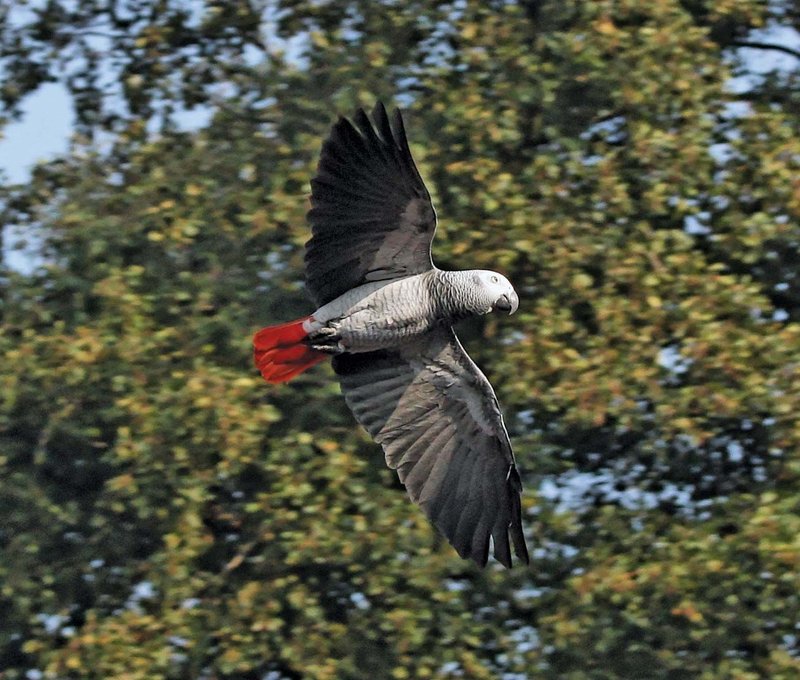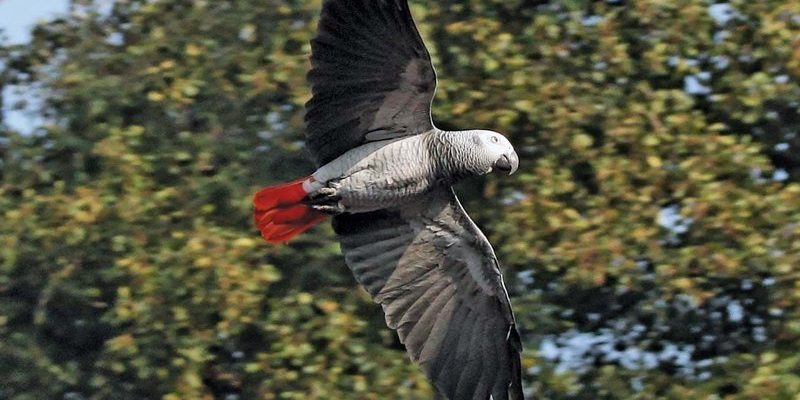
As a parrot enthusiast, you might be curious about how these birds navigate their surroundings and hunt for food. This article dives deep into their unique flying styles, hunting strategies, and the reasons behind their remarkable abilities. So grab a comfortable chair and let’s explore the fascinating world of African Grey Parrots!
Understanding African Grey Parrots
Before we get into specific techniques, it’s essential to have a grasp on what makes African Grey Parrots so special. These birds are known for their incredible intelligence and social nature. Native to the rainforests of Central Africa, they thrive in complex environments where they utilize their skills to survive. Their keen minds enable them to not only mimic sounds but also understand social cues and problem-solve.
African Grey Parrots are medium-sized, usually around 12-14 inches long. They have a striking appearance with a gray body and bright red tail feathers. The combination of their beauty and intelligence makes them popular pets. However, their wild counterparts showcase remarkable adaptations that help them navigate their habitats and hunt effectively.
The Art of Flying: Aerodynamics and Agility
Flying is an essential skill for African Grey Parrots. Their wing structure is designed for agility, allowing them to make sharp turns and sudden changes in direction. Picture a fighter jet effortlessly dodging obstacles—this is how these birds maneuver through the trees and dense underbrush of their habitats.
One key aspect of their flying technique is their ability to glide. They use their wings to catch air currents, which helps them conserve energy while traveling long distances. Usually, they flap their wings to gain height, then extend them fully to glide down toward their destination. This not only makes their flight more efficient but also gives them a fantastic view of their surroundings, aiding in both navigation and foraging.
In addition to gliding, African Grey Parrots are known for their climbing prowess. When they’re not soaring through the air, they skillfully climb branches and tree trunks. Their strong beaks and zygodactyl feet (two toes facing forward and two backward) facilitate this climbing, making them adept at reaching hidden food sources.
Hunting Techniques: Foraging in the Wild
When it comes to hunting, African Grey Parrots are resourceful foragers. They primarily feed on fruits, nuts, seeds, and even insects. But how do they find food in the wild? Here’s where their intelligence and adaptability shine.
Firstly, these birds are expert observers. They pay close attention to their surroundings and can spot food sources from quite a distance. Often, they will watch other animals or even fellow birds to learn where to find food. This social learning is crucial for survival. By mimicking the foraging behavior of others, they increase their chances of finding tasty treats.
Another interesting technique is their use of tools. Some African Grey Parrots have been observed using sticks or other objects to help extract seeds or fruit from hard-to-reach places. It’s a bit like using a fork to get the last piece of cake—resourceful and clever!
Finally, knowing when to forage is vital. These birds often wait for the right conditions—such as when it’s sunny or after the rain—to search for food. These environmental cues tell them when fruits are ripe or when insects are active, maximizing their chances of a successful meal.
Social Dynamics in Hunting
African Grey Parrots are inherently social creatures. Their social structure plays a crucial role in how they hunt and forage. Living in flocks allows them to collaborate and communicate effectively. Imagine a team of detectives working together to solve a case—that’s how they operate in the wild.
When foraging, these birds often maintain a watchful eye on each other. This way, if one parrot finds food, it can signal the others. The use of vocalizations and body language is integral in these situations. African Grey Parrots have a rich array of sounds, from whistles to chirps, which can indicate food sources or warn of danger.
Moreover, social dynamics can influence foraging success. By working together, they can cover more ground and reduce the risk of being attacked by predators. It’s a classic example of “strength in numbers,” where the safety of the group outweighs the risks of individual foraging.
Flight Challenges: Navigating Obstacles
While African Grey Parrots are graceful flyers, they still face challenges when navigating their forest homes. Dense vegetation, branches, and other natural obstacles can pose significant threats. Their ability to adapt to these challenges is part of what makes them such skilled flyers.
One method they use is changing their flight patterns. For instance, when approaching obstacles, they might switch from a soaring flight to rapid flapping to gain more control. This agility allows them to weave through branches or quickly descend to avoid predators.
Being aware of their surroundings is another critical aspect of their flying technique. They have excellent vision, which helps them spot obstacles ahead. They rely on this keen eyesight to adjust their flight path as necessary, much like a driver scanning the road for hazards.
Conservation and Its Impact on Their Skills
As enchanting as African Grey Parrots are, their survival skills are increasingly put to the test due to habitat loss and the pet trade. Conservation efforts aim to address these challenges, but it’s crucial to recognize how these threats impact their natural behaviors.
With fewer trees and food sources, their hunting techniques may adapt to different environments. This could lead to changes in their social structures and foraging habits. For example, in areas where food is scarce, they might resort to competing more aggressively or rely on finding new food sources.
Conservation isn’t just about preserving species; it’s about protecting the rich skills they’ve developed over time. By being aware of these issues, we can help advocate for their protection and support efforts to maintain their habitats.
Bringing It All Together: The Importance of Understanding
The unique flying and hunting techniques of African Grey Parrots showcase their remarkable adaptability and intelligence. From their agile flying skills to their clever foraging strategies, these birds are true marvels of nature. Their ability to navigate complex environments and socialize effectively allows them to not only survive but thrive.
Understanding these traits can help us appreciate these birds even more. Whether you’re a pet owner or a wildlife enthusiast, recognizing their unique skills enriches our connection to them. By continuing to learn about and advocate for the African Grey Parrot, we can ensure that future generations will enjoy the wonders they bring to our world.
So next time you see an African Grey Parrot or hear one of their delightful sounds, remember the incredible flying and hunting techniques that make them who they are. It’s a testament to the power of nature and the need for us to protect it.

